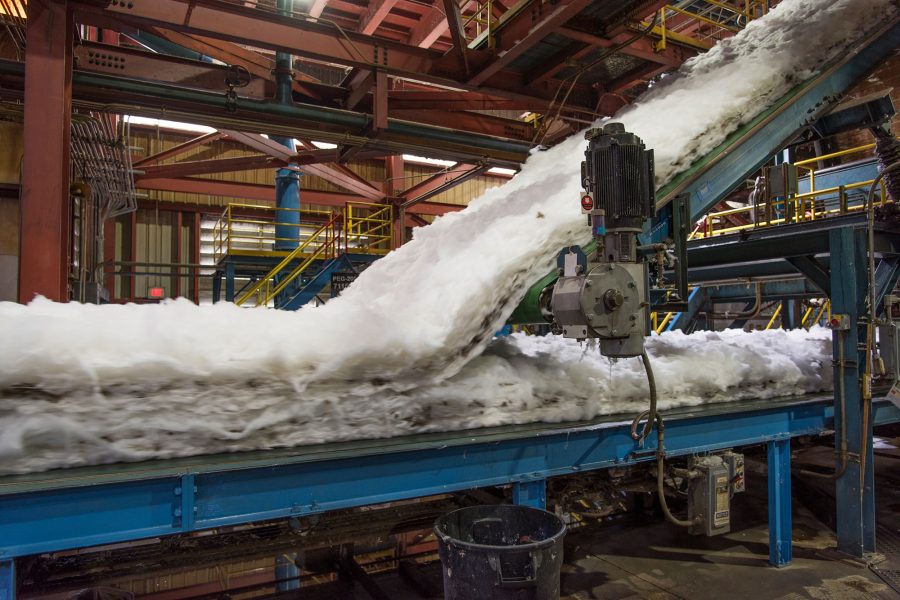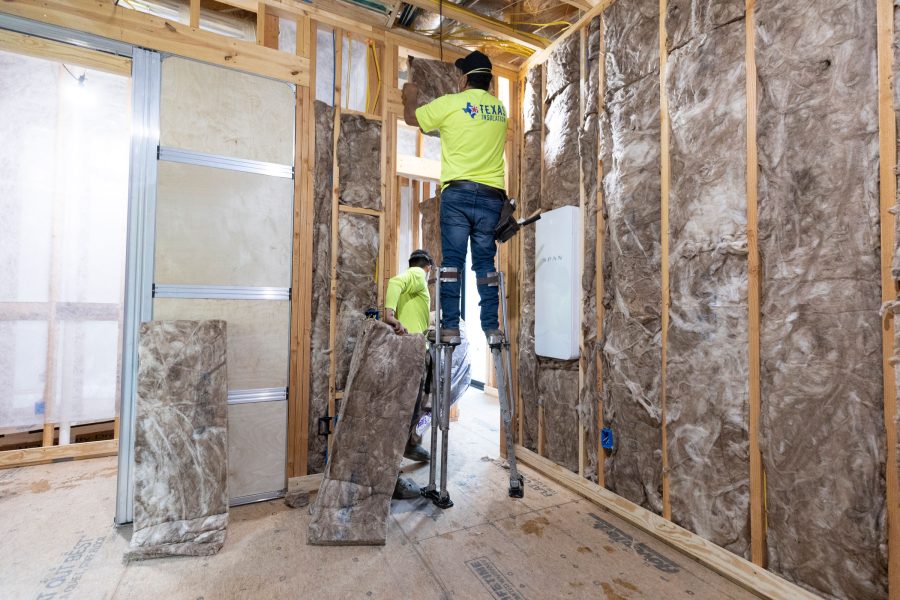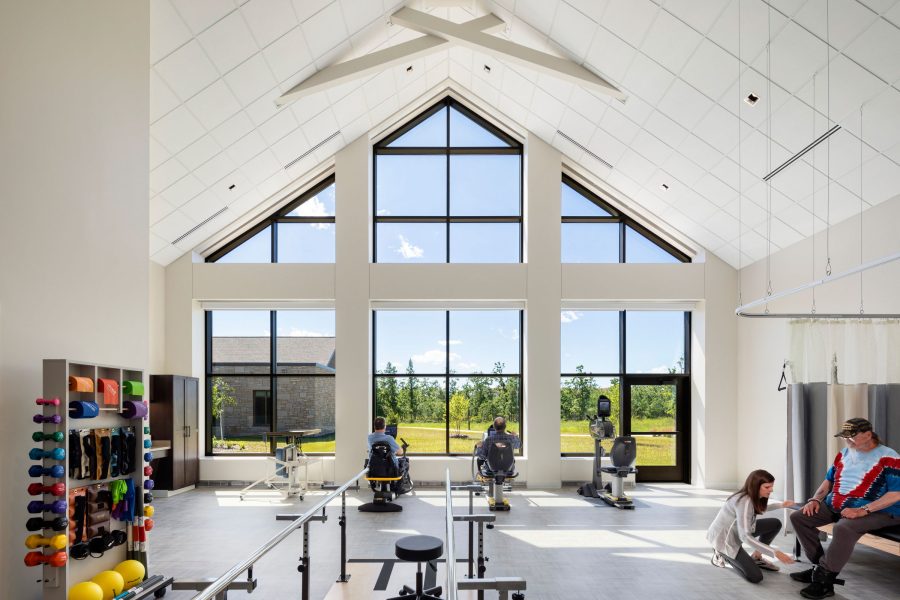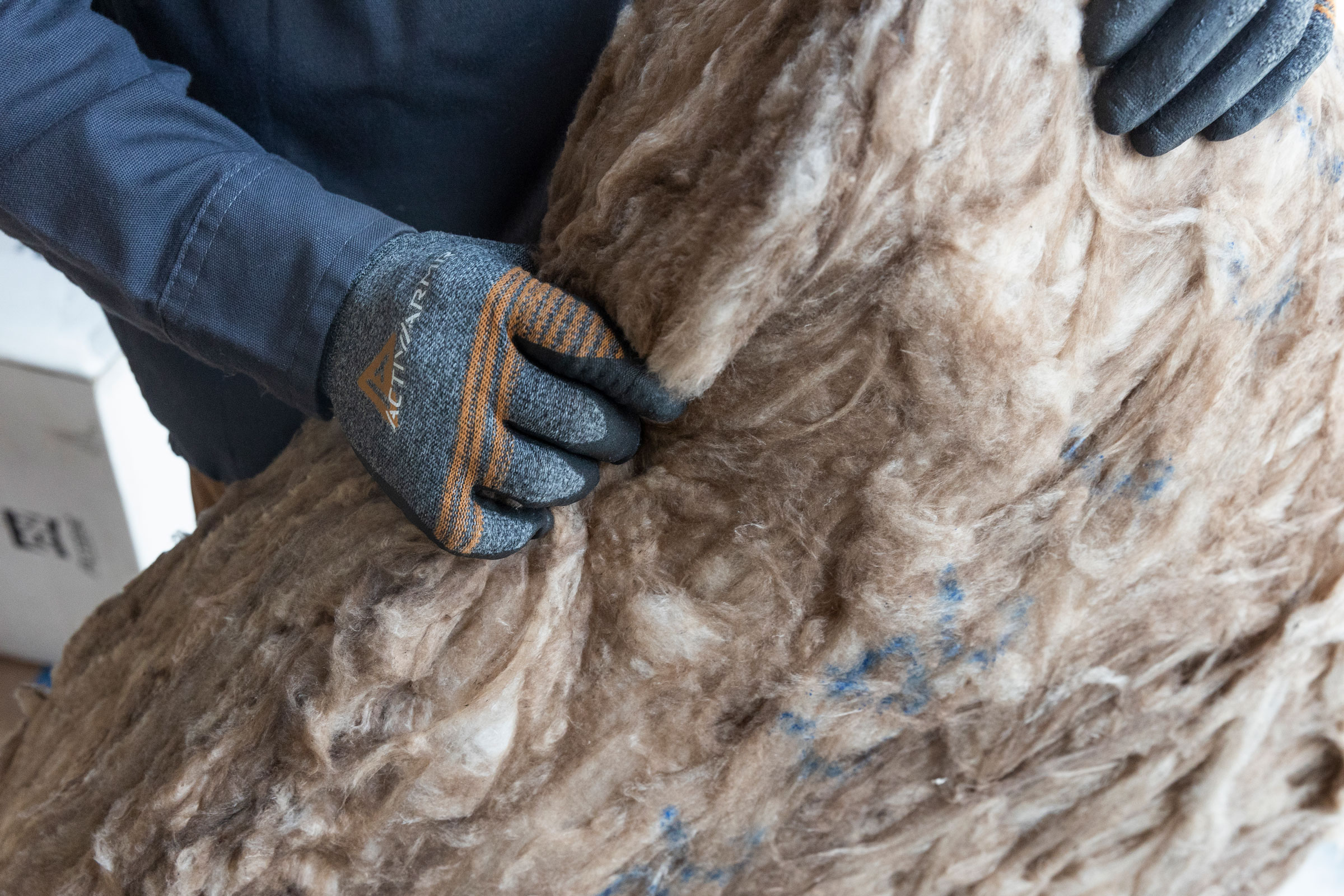Story at a glance:
- The demand for insulation is tremendous as awareness of building codes, energy use, and sustainability increases and manufacturers strive to meet needs.
- Knauf recently launched a portfolio of products that includes using formaldehyde-free binders and having extremely low particulate and post-installation dust levels and VOC emissions.
- Though the industry is migrating toward more natural ingredients, insulation still provides building essentials like thermal comfort and acoustic performance.
Some might say there’s nothing less sexy than air sealing and insulation, but when you ask the right people, there’s plenty of passion to be had on the subject.
Although insulation may not enhance your structure’s curb appeal like an architect’s design or add aesthetic value like an interior designer’s touch, it plays a vital role in your home’s comfort, health, and efficiency.
Insulation as a whole keeps spaces comfortable, supports health and safety, and helps structures withstand the test of time. Most importantly it helps save energy, which can mean lower utility bills—especially with the volatility of energy costs. While insulation and air sealant are often hidden behind walls, ceilings, and floors—out of sight and often out of mind—these materials perform some of the most critical jobs in a building.
The reality—nearly 89% of US homes are under-insulated, and even more lack proper air sealing, according to David Ware, a specification specialist at Knauf, one of the world’s largest manufacturers of insulation products and solutions. “Don’t let your building fall into that category—investing in quality insulation and air sealing is one of the smartest decisions architects, engineers, and contractors can make to impact our indoor environments, thus ensuring that homeowners or building occupants have a comfortable and efficient indoor space to enjoy,” Ware says.
Despite the alarming statistic of under-insulation in homes, most people know little about how insulation and air sealing works, what type they have (or don’t have), and the range of benefits insulation provides. Understanding the importance of insulation and air sealing can help make a significant difference in a home or building’s comfort, efficiency, and overall performance. “It’s not electronic controls, and it’s not renewable energy. It’s not any of the things that get headlines, but insulation is important because it establishes the baseline,” Ware says.
Evolution of Insulation

Knauf is one of the world’s largest manufacturers of insulation products and solutions. Photo courtesy of Knauf North America
Modern fiberglass insulation has come a long way from its early days. Today’s fiberglass products are not the same as they used to be. Manufacturers use modern technologies to create insulation products that are used in homes and buildings for thermal purposes and acoustical purposes. There are also a host of mechanical insulation products used for air handling systems (ducts, liners, and wraps), for a wide range of plumbing and process piping applications, for appliances, and for other specialized applications, such as aircraft and boats, as well.
Knauf’s fiberglass insulation is a product that results from melting and spinning recycled glass into flexible fibers of various forms that, when installed in a building, slows heat transfer, reduces operational carbon, helps mitigate sound transmission, and contributes to improved indoor air quality and energy efficiency.
Knauf is dedicated to continuously refining and innovating its products to further support installers. Over time Knauf has improved its insulation products in multiple ways. The company was a leader in the industry in the move away from the use of phenol-formaldehyde—with the introduction of ECOSE Technology, a bio-based binder with low VOCs. Ware says it’s a clear example of the organization’s continued commitment to improving the experience for installers and providing better indoor air quality for occupants.

Photo by Erich Schlegel, courtesy of Knauf North America
“Knauf wants a better environment for our children; our parents and grandparents wanted the same thing. It’s an evolutionary process,” Ware says. “Knauf took on the R&D work to develop a product that is extremely usable with noteworthy performance and longevity.”
To meet market demands for healthier indoor environments, Knauf recently launched Performance+®. This portfolio of fiberglass insulation products is Asthma & Allergy Friendly–Certified and Verified Healthier Air, having been rigorously tested by a third party to ensure products meet standards. This includes using formaldehyde-free binders and having extremely low particulate and post-installation dust levels and VOC emissions.
To be recognized as Asthma & Allergy Friendly–Certified and Verified Healthier Air, Performance+ meets higher standards for indoor air quality, which remains critical as people spend 90% of their time indoors, where air quality can be more polluted than outdoor air.
“When installed correctly, insulation can have a positive impact on indoor air quality, allowing the more sophisticated systems throughout the building to operate optimally,” says Greg Gauthreaux, associate principal at Perkins Eastman.
Knauf has also made it a priority to provide further transparency in product ingredients through programs like Declare, Health Product Declarations (HPDs), and product life cycle impacts through Environmental Product Declarations (EPDs). Knauf was an early adopter among building materials manufacturers in providing product emission quality testing and validation with GREENGUARD and GREENGUARD Gold.
Choosing Insulation

The D.J. Jacobetti Veterans Home in Marquette, Michigan, broke ground in June 2025. Rendering courtesy of Perkins Eastman
There is not a one-size-fits-all solution for the best insulation on a project. Architects and engineers have to consider a variety of factors, including climate zone, what assembly needs to be insulated and air sealed, and whether the assembly is below grade, on grade, or above grade.
When considering criteria like R-value, U-factor contribution to the assembly, material sustainability, resilience, product ingredient transparency, energy efficiency, and contribution to LEED credits, insulation becomes a critical decision in a building’s design.
Quality insulation installation using insulants carrying Asthma & Allergy Friendly certification, GREENGUARD, HPDs, and Declare Red List–free labels not only reduces exposure to potential impacts caused by the solutions used, they also reduce energy waste, Ware says. When coupled with proper air sealing, the entry of outdoor pollutants is limited, increasing the potential for healthier indoor air.
It is critically important that insulation and air sealing is done well from the outset because the materials chosen early in the design stage will impact the people spending time in that space—not to mention having to go back in to fix an installation is expensive and not easily done.
“You really only have one chance when you’re building a home or building to get the insulation and air sealing right,” says Tim Cofran, director of marketing and brand for Knauf. And when done right, builders can improve the life of a building and sustain the lifespan of the materials.
“The science of a wall has so much complexity,” Gauthreaux says. “Insulation isn’t just insulation; it can be fun. There are so many variables, and it’s important to immerse yourself in the data and do the research before making your decision.”

Choosing insulation depends largely on climate. This Perkins Eastman–designed Veterans Home is in Bemidji, Minnesota, a northern, cold climate. Photograph by Andrew Rugge, courtesy of Perkins Eastman

